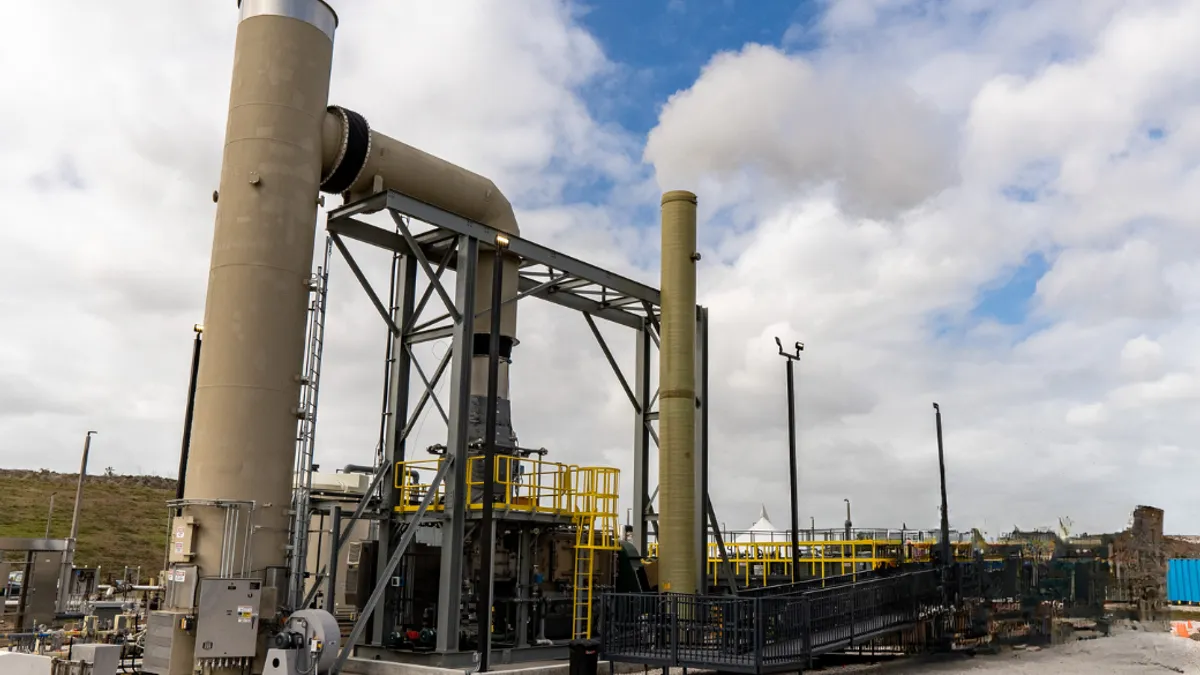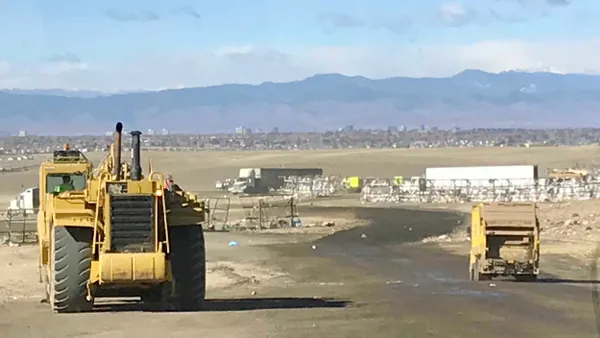The growing risk of PFAS
Per- and polyfluoroalkyl substances, commonly known as PFAS, have emerged as a significant environmental and health concern over the past few decades. Their persistence in the environment and potential adverse health effects triggering the USEPA to consider adding PFAS to RCRA standards as well as CERCLA to list PFOA and PFOS as hazardous substances while individual states develop local policy. While landfills do not generate PFAS, they do contain some of the highest levels of PFAS contamination as they are common depositories for consumer products, food, and other wastes containing these chemicals. As a result, landfill leachate is often one of the wastewaters with the highest concentration of PFAS. Today many landfills utilize wastewater treatment plants (WWTPs) for leachate disposal, yet most facilities are not designed to treat PFAS and are growing concerned by the changing discharge regulations at the state and local level.
Shifting from offsite treatment to onsite treatment allows for reduced risk for both landfills and WWTPS and creates a closed loop system to keep PFAS from leaving the landfill site. According to the EPA, “Modern MSW landfills, when constructed with appropriate controls (e.g., liner system and leachate and gas collection and management systems), can also control the migration of PFAS into the environment.” Landfill owners and operators should consider onsite treatment methods that keep PFAS within the landfill, therefore eliminating risk associated with transporting and treating PFAS at WWTPs or other offsite treatment facilities.
Onsite evaporation for PFAS sequestration: A deeper look at PFAS behavior
On-site evaporation of leachate can dramatically reduce leachate volume by up to 95% leaving a concentrated residual for disposal or destruction. Heartland Water Technology manufactures a direct contact evaporator which is ideally suited for leachate treatment and PFAS retention.
The chemical form of a given PFAS is pH dependent and determines its physical and chemical properties. Above a pH of 5, dominant PFAS in leachate exist nearly entirely in the dissociated ionic form which is highly soluble in water. These physical and chemical properties of PFAS are perfectly aligned with the current design of the Heartland Concentrator™, resulting in high retention of PFAS:
- Operational pH: Heartland Concentrator™ operates in a pH range of 6.5 to 8.5, PFAS are generally in their non-volatile ionic form.
- Evaporation Temperature: 130-160 deg F operational temperatures result in efficient evaporation while maintaining temperatures below the boiling point of each PFAS compound. Additionally, large “macro-droplets” are reduced to smaller droplets in a highly wetted evaporation zone, avoiding spray drying.
- High Efficiency Mist Elimination: A three-stage, high efficiency mist elimination system is utilized to remove water droplets from the gas prior to discharge, avoiding potential airborne PFAS emissionsOnsite evaporation of landfill leachate has long been an effective alternative to offsite disposal. With recent commercial scale testing, Heartland demonstrates that same proven process also sequesters PFAS into a concentrated residual which is effectively retained in the landfill. Operators can dramatically reduce the volume of leachate, take trucks off the road and lock-in disposal certainty while simultaneously managing PFAS.
Case studies
In 2022 and 2023, Heartland conducted independently reviewed studies at two different municipal solid waste (MSW) landfills sites in the Eastern US, each employing a Type 4 Heartland Concentrator™. Utilizing Draft EPA Method 1633, a mass balance approach was used to determine the amount (lb/hr) of PFAS in the feed and residuals. PFAS compounds targeted included: PFOA, PFOS, PFNA, PFHxS, PFBS, HFPO DA (Gen X), PFBA, PFHxA, and PFDA, all highly prevalent in landfill leachate.
Site 1 operated at a volume reduction of 95.9%, reducing 52,700 gallons per day (6,305 ng/l PFAS) of raw leachate to 2,140 gallons per day (152,579 ng/l PFAS) of residuals. Site 2 operated at a volume reduction of 84%, reducing 40,000 gallons per day (30,874 ng/l PFAS) of raw leachate to 6,400 gallons per day (194,209 ng/l PFAS) of residuals.
When considering inherent error in testing, the feed and residuals PFAS mass were essentially identical, indicating the retainment of PFAS in the liquid residual. Case study 1 and 2, both validated by HDR, inc, confirm that the PFAS was retained in the concentrated residual.
Conclusion: Assured PFAS Separation
Leachate evaporation, through the Heartland Concentrator, is a highly effective and promising approach for assured PFAS separation and management. The ability to concentrate and isolate PFAS compounds from complex leachate streams mitigates environmental risks, returns clean water to the environment, and creates a concentrated waste stream suitable for PFAS destruction technologies as they enter the market. Full scale commercial installations demonstrate the design of the Heartland Concentrator™, including the evaporation zone, operational temperatures, high-efficiency mist elimination, make the technology an effective solution to retain PFAS compounds in landfills and out of the environment.
For the full story on PFAS Separation, request Heartland’s full whitepaper here.










